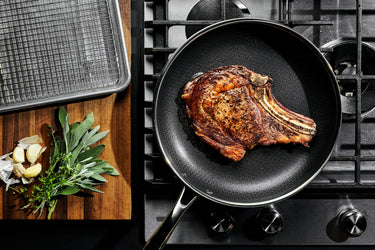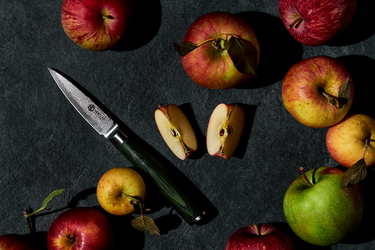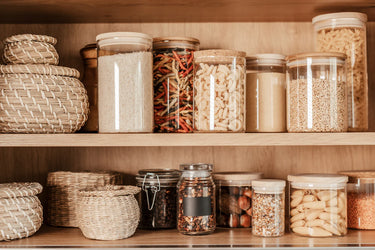3 Reasons To Cook Your Steak In The Oven

There are many ways to cook a steak. Though, slapping a sirloin on the grill or butter-basting a T-bone in a skillet might come to mind, we’re here to make the case for using your oven to cook the steak. A technique called reverse-searing, specifically, allows you to cook the interior of a steak at a low, even temperature in the oven before finishing the steak off in a skillet to get a deeply flavorful crust. This works best for thicker cuts of meat like filet mignon, porterhouse, tomahawk, t-bone, wagyu, and ribeye. Skip this method for quick-cooking cuts like skirt or flank (or anything else less than 1½ inches thick, even if it’s one of the cuts listed above). Basically, if the steak is over 1½ inches, the reverse-sear is your friend. If not, stick to searing the steak quickly on both sides in the pan or on the grill. Though you can sear the steak first and send it to the oven to finish cooking after, it is less reliable than the reverse-searing technique. This method works well with thick pork chops, too, so give it a try if you have a couple on hand.
Pro-tip: No matter which method you choose, take your steak out of the refrigerator 30 minutes before you begin cooking. This brings the meat to room temperature—for more even cooking—and dries the surface of the meat out, which contributes to getting a crispy crust.
Here are 4 reasons to cook steak in the oven:
Of course, there are a few disadvantages to this method for cooking a steak in the oven. It’s much more time-consuming than simply cooking a steak on the stovetop. And, as mentioned above, reverse searing a steak that’s less than 1½ inches thick will cook too quickly in the oven. But if you’ve got a gorgeous, thick steak waiting to be cooked, why not try the reverse sear?
You’ll need:
- A steak that’s 1½ to 2 inches thick
- Kosher salt and freshly ground black pepper
- A rimmed baking sheet and a wire rack that fits inside
- An instant-read thermometer
- A heavy-duty skillet
- Neutral oil
Here’s how to reverse-sear your steak:
- Preheat your oven to 250ºF (120ºC). If you haven’t already, take the steak out of the refrigerator. Place it on a wire rack set inside a rimmed baking sheet and season it all over with salt and pepper.
- Place the steak in the oven. Cook until an instant-read thermometer inserted into the thickest part reads 105°F (41°C) for rare, 115°F (46°C) for medium-rare, 125°F (52°C) for medium, or 135°F (57°C) for medium-well. Start checking around 20 minutes.
- Heat a medium skillet over high heat. Add a tablespoon of oil and once shimmering, add the steak and cook, turning once, until both sides are well browned. Use tongs to turn the steak to sear the edges. Serve immediately.
Now that you’ve got a perfectly cooked steak, it’s time to break out knives worthy of the occasion, like HexClad’s Japanese Damascus steel steak knives.





